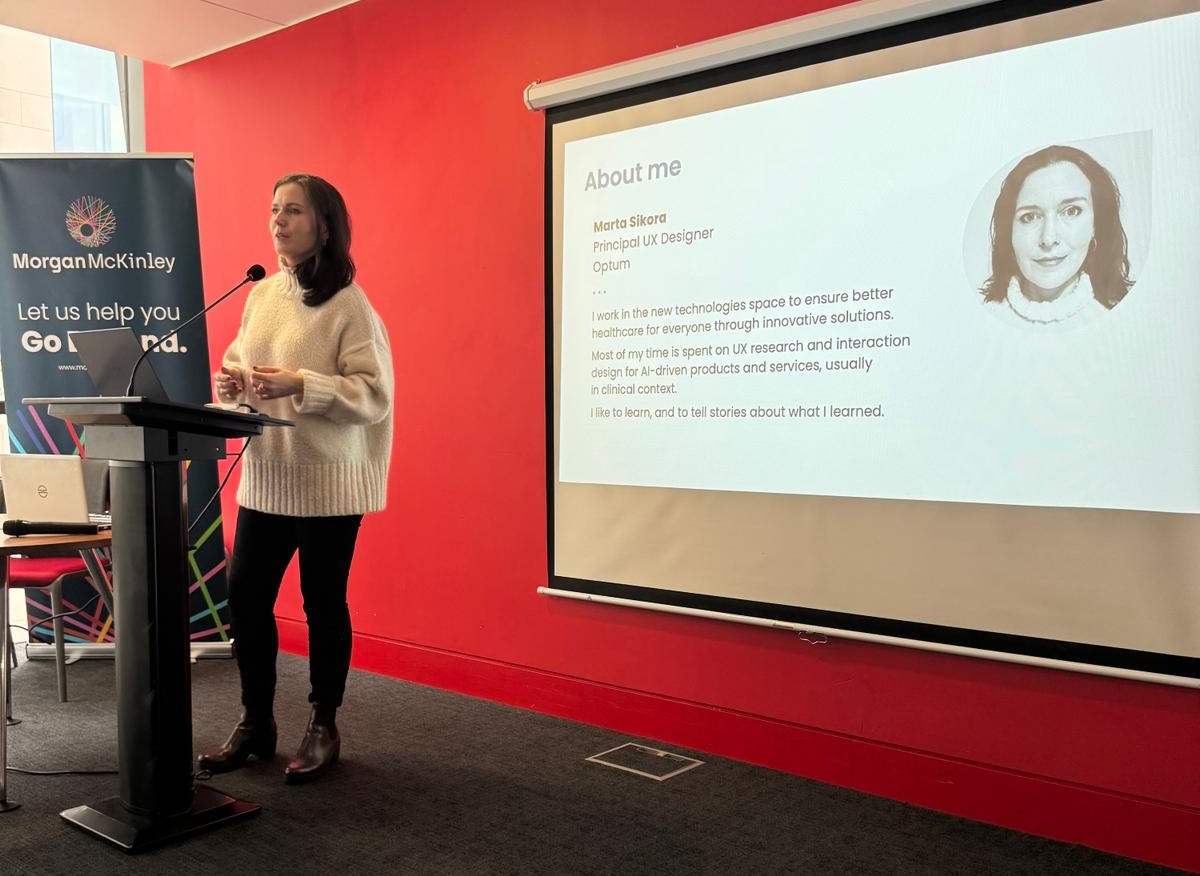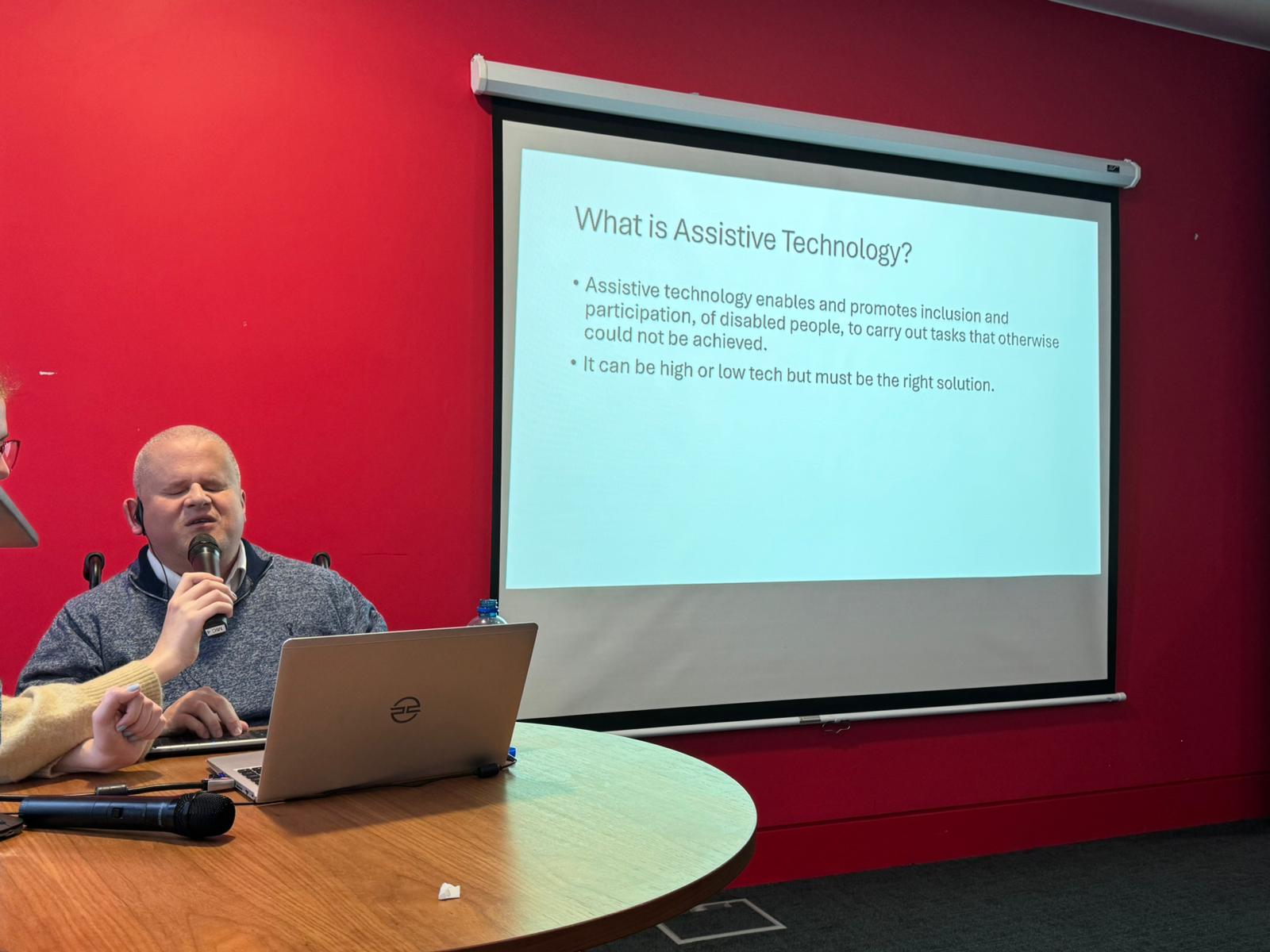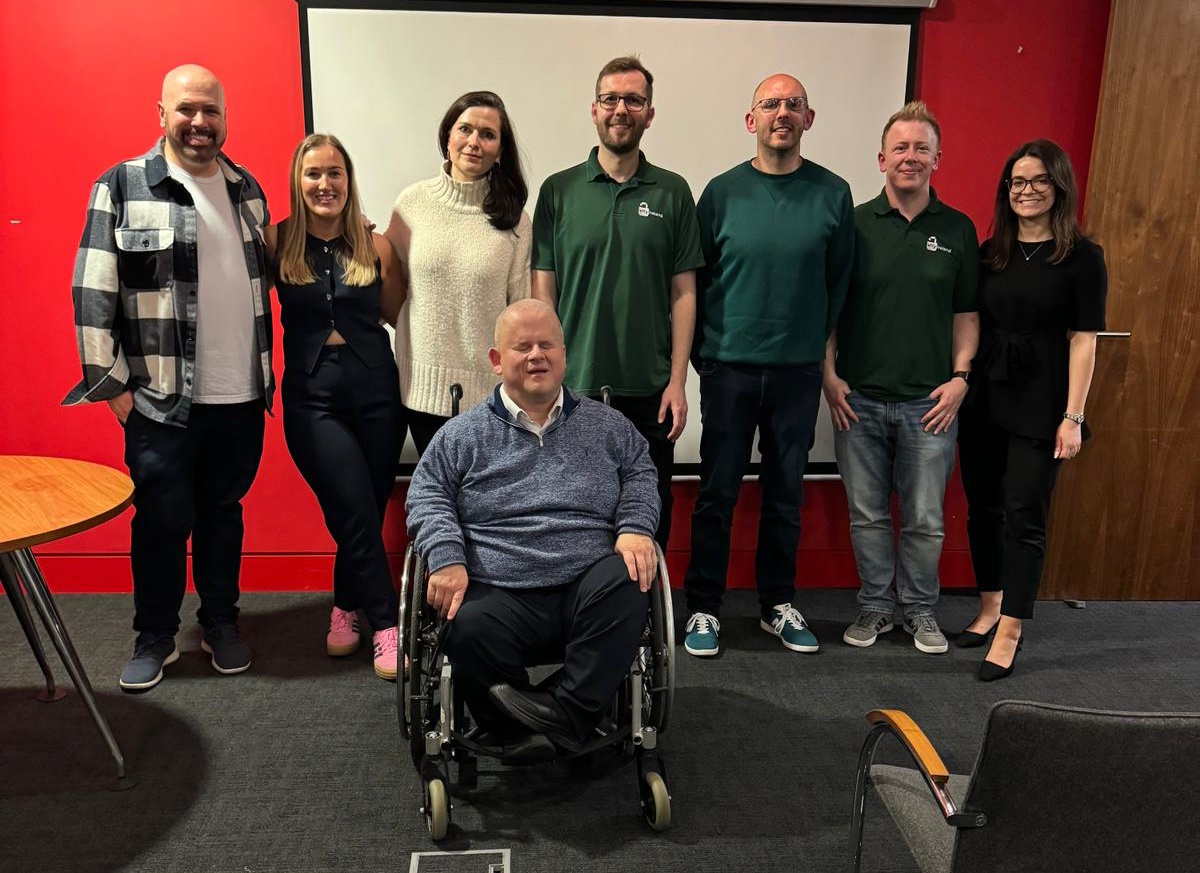Today, to mark GAAD (Global Accessibility Awareness Day) we are going to share a recap of our first in-person, digital accessibility event "Locked Out: The human Impact of inaccessible design" which took place last month, on Thursday the 18th of April.
We were treated to two fantastic talks on the night, the first of which was from Marta Sikora who focused on the ripple effect of inaccessible UX and how it not only affects people with permanent disabilities but also those who experience temporary and situational disabilities. Our second speaker, Brian Dalton, focused on the personal impact inaccessible UX can have, and the barriers he has faced as a native screen reader user.
Talk 1: The Ripple Effect of Inaccessible UX

Marta explored the Persona Spectrum from Microsoft's Inclusive Design and the Inclusive 101 Guidebook (PDF) which covers some scenarios around the cognitions Touch, See, Hear and Speak, and how each of these, if not considered when designing, can have a permanent, temporary and situational impact on people. If we take Touch for example, someone with one arm is permanently impacted, someone with a broken arm is temporarily impacted and someone who is carrying shopping bags is situationally impacted. Similarly if we take See, someone who is blind is permanently impacted, someone who has cataracts is temporarily impacted and someone who is distracted while driving is situationally impacted.
"We use the persona spectrum to understand related mismatches and motivations across a spectrum of permanent, temporary, and situational scenarios. It's a quick tool to help foster empathy and to show how a solution scales to a broader audience."
Microsoft Inclusive Design.
Marta also looked at how The Ministry of Justice in the UK took the Persona Spectrum and tailored it to their specific needs within a court setting by including an additional scenario for Think which considered how the Court experience can impact people.
Marta rounded off this section by sharing personal examples of permanent, temporary and situational disabilities that have directly impacted her life. While Marta permanently lives with myopia and astigmatism, which she wears specific prescriptive contact lenses for, her sight was temporarily affected when she contracted an eye infection due to sand entering her eyes during a sandstorm while on holidays. This impacted her ability to use her contact lenses while she treated the infection and in turn temporarily affected her ability to see properly during this period. The COVID-19 pandemic provided a situational impact to Marta's sight when her prescription for her contact lenses ran out and she had trouble filling the prescription with the optician at the time due to supply shortages and shipping delays.
Marta then went on to talk about how certain accessibility features that were created for one use case can often be impactful in other use cases, maybe without the creator realising this. She talked through a post by Sarah Winters on LinkedIn who is a migraine sufferer. Sarah's post talks about how the features she has used on her smartphone to help her navigate when she is mid-migraine have been invaluable to her in her situation even though they were created for a different purpose. You can read the full post on Sarah's LinkedIn profile.
"For those working in accessibility: thank you. You are helping people when you (possibly) don't even realise you are doing it."
Sarah Winters.
To sum up Marta's talk, everyone at some point in their life, if not already, will be impacted by a permanent, temporary or situational disability. Considering something like the Persona Spectrum when creating a product will help ensure it can be used by the widest audience possible. Also, more often than not, when accessibility is prioritised it has a positive impact on everyone and not only the specific user needs it may have been intentionally created for.
Talk 2: Inaccessible UX, a personal impact

Now onto Brian, and his personal experiences. Brian has been a screen reader user since 1990. For those of you who may not know what a screen reader is, Brian explained that a screen reader is software that outputs the screen data as speech and allows the user to read, navigate and interact with the page content with their device. All tasks a sighted user can perform can be also done with a screen reader, if the content is correctly implemented.
Top Tip: Anything you can do on screen with a mouse, you should be able to do with a keyboard!
Popular screen readers include: JAWS, NVDA and Narrator for windows, VoiceOver for Apple products, and TalkBack for android.
One of the biggest frustrations that people who use screen readers can experience is poorly created digital content which is difficult, sometimes even impossible, to navigate, operate and understand, due to poor design, inaccessible code, or perhaps ambiguous content that doesn't make any sense without visual context.
Brian spoke personally about the high cost of purchasing screen readers earlier in his life and how smartphones have drastically improved his, and many others, ability to engage with the digital world.
Next, Brian walked us through some thought-provoking demos. For the first demo, he switched off his display so that the audience could only hear what was being announced by the screen reader. He navigated, or attempted to navigate, through a poorly constructed PDF form, and very clearly illustrated the barriers he faced when something as simple as a PDF document had not been created with screen readers or accessibility in mind. He then turned his display back on and explained that because the document was not actually created in an editable PDF format (which isn't difficult to do) he would need assistance from someone to print the form and fill it in by hand for him, taking away his independence when he could easily do it himself if the PDF had been accessible.
Brian then demonstrated how the online shopping experience can be a struggle if retailers do not ensure that their e-commerce sites are accessible and coded correctly to be compatible with screen readers. He performed the same task, trying to purchase the new iPhone on two different websites and highlighted how one experience can greatly differ to the next depending on how well accessibility is considered and implemented on the sites. The first experience was significantly more difficult than the second due to the lack of context provided to the screen reader and the difficulty in being able to identify what section of the website he was on and where the button to go to the cart was located.
To summarise Brian's talk, advancements in technology have improved the digital experience for Brian and many other screen reader and assistive technology users. However, today there are still so many barriers for people with disabilities due to inaccessible created websites, apps and digital content. And as Brian aluded, it is the responsibility of everyone to make our digital products and content accessible.
"Bad design disables, good design enables."
Brian Dalton.
In Conclusion
Thanks so much to all that attended. It's part of our mission to build a community of accessibility advocates in Ireland so it was wonderful to see the great turn out. We were very lucky to have two brilliant speakers for our first event. A huge thank you to Marta and Brian.
Lastly, a very big thank you again to our event partner Patrick Mooney and Dublin UX, and to our hosts Morgan McKinley.

Get involved!
We invite you to explore, learn, and engage with us. Join our email list to stay updated on the latest news, events, and resources. We also welcome anyone who wishes to collaborate with us to reach out to us.
Let's build a digital world where accessibility isn't just a feature but a fundamental right.
Stay tuned for updates, and let's make the digital landscape accessible for all.
Join our email list
If you would like to be kept up to date about Accessibility Ireland feel free to sign up to our email list.